Wondering what we think are the best places to travel in 2023? Look no further. We’re highlighting some incredibly unique spots we’re so excited to explore with you this year. If you’re tired of conventional travel recommendations, looking to explore deeper, and connect with a place, this list is for you.
We’ve rounded up a list of destinations that include exploring the untamed jungles of São Tomé and Principe, to spotting snow leopards in the remote Himalayan Mountains of Ladakh, India. We’re even trekking for lowland gorillas in the baïs of The Republic of Congo and floating down the Nile in a traditional Egyptian dahabiya. Where are you traveling this year?
Patagonia National Park, Chile
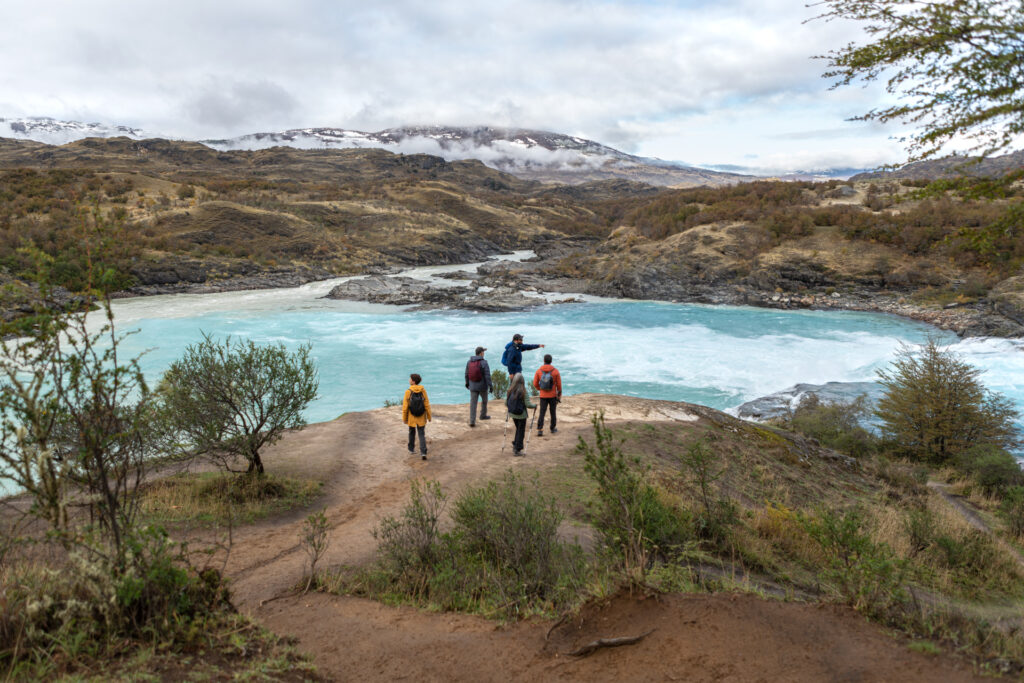
We’re sure you have heard of Chile’s Torres Del Paine National Park, one of the most visited and most beautiful national parks in the world, as well as Argentina’s Los Glaciares National Park—but have you heard of the newer Patagonia National Park in the northern Aysén Region of Chile? It’s a part of the world full of ancient rock art, trails that have seldom been trodden, and herds of fluffy guanaco (llama-like creatures). Officially opened at the beginning of 2018 by conservationists (and co-founders of The North Face) Doug and Kris Tompkins, the park is dotted with spectacular glacial rivers, clear lakes, snow-capped mountains, vast grasslands, and deep valleys to be explored. The region encompasses 690 square miles and is still very untouched. The park stretches all the way to the Argentinian border and has been called the “Serengeti of the Southern Cone.” Patagonia is one of our top travel destinations and best places to travel in 2023.
Patagonia National Park is one of Chile’s most important eco-restoration and rewilding projects. Every visit here is a journey to conservation. Fundaćion Rewilding Chile protects wild species, including puma, condor, ñandú, and huemul (South Andean deer). There’s also a large population of flamingos and vizcacha (closely related to rabbits), which you can spot around the mountains and icy lagoons. It’s a place where wildlife enthusiasts and adventure-seekers alike will thrive.
If you’re into hiking (of course you are if you’re headed to Patagonia) you can access plenty of beautiful trails and day hikes from the visitor’s center or the lodge you chose to stay at. Or, if you’re up for a real challenge, we can help you plan a three-day wild trek through the Áviles valley to nearby Reserva Nacional Jeinimeni. (PS. we have a list of the top hikes in South America if that’s your thing on the blog).
If you stay at the intimate Explora Lodge—the only accommodation inside the park—you can skip the six-hour drive from Balmaceda Airport (along a gravel road that’s part of the iconic Carretera Austral) and take a 45-minute private flight between the airport and the lodge in Patagonia National Park. You can experience hiking, kayaking, and bike riding excursions from Explora. For a more relaxed, family-run, boutique vibe, we love the cozy Mallin Colorado perched on a hillside overlooking Lake General Carrera, encircled by snow-capped mountains. The best time to visit Patagonia National Park is between September and March (the Austral spring and summer) when the days are longer and warmer, and there’s less rainfall than any other time of year.
Looking to learn more about where to stay in the unique Aysen region of Chilean Patagonia? Check out this story on the blog on the top eco-lodges to visit in the region.
Aswan, Egypt
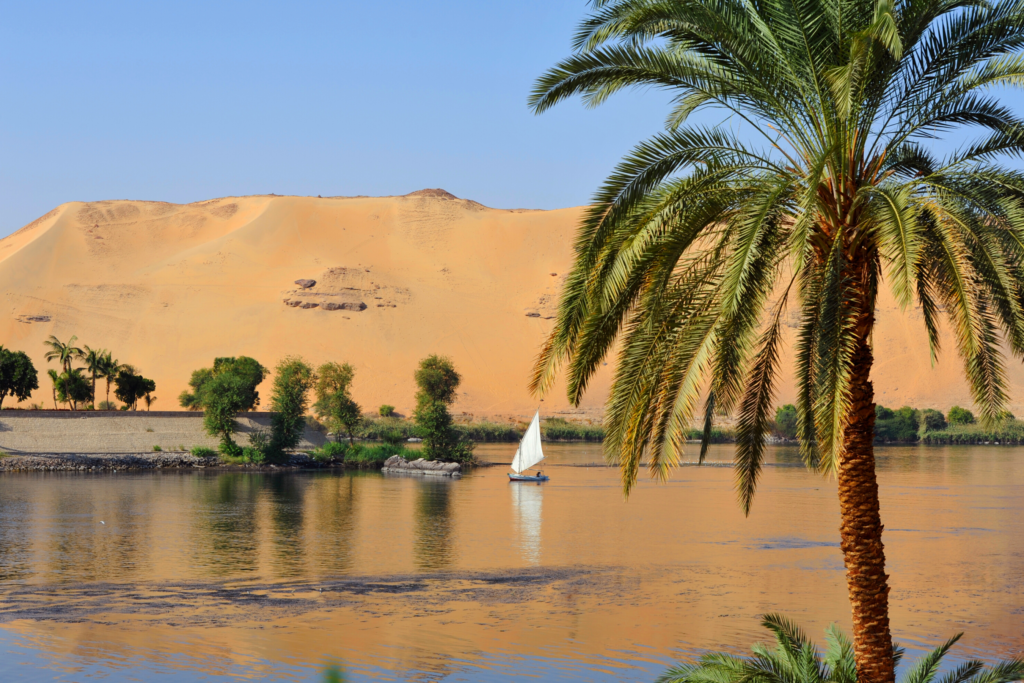
This lush, green oasis in southern Egypt on the East Bank of the River Nile has been around since antiquity and has long been the country’s gateway to Africa. The laid-back, friendly city of Aswan will capture your heart and soul with its stunning landscapes and architecture, as well as many open-air markets and its iconic felucca cruises (traditional wooden sailboats with lateen sail). Aswan is one of our top travel destinations.
Many ancient Egyptian monuments, statues, and materials used for temples, pyramids, and shrines throughout the country were cut from Aswan’s quarries: pink and black granite stones and limestones. The Philae Temple—only accessible by boat—is one of the best-preserved temples of the Ptolemaic Dynasty. Dating back 2,000 years, it’s one of the youngest Ancient Egyptian temples. You can also visit Elephantine Island, which today is the site of two Nubian villages, Siou and Koti, and once played a significant role in the ivory trade.
Abu Simbel temples—carved into the Nubian cliffs—are arguably the most breathtaking. Not far from Aswan, they can be visited on a day trip. One was built to celebrate Ramses II, and the other was built in honor of his wife Nefertiti.
Alongside the stunning views and ancient history and architecture—if shopping is your thing—Aswan is famous for its custom-blends of perfumes using local essential oils such as mint and eucalyptus (the region actually provides many ingredients for perfumes by Chanel and Christain Dior). Known as the “Land of Gold” it’s also one of the best places in Egypt to shop for 18-karat gold—the quality and purity is unparalleled. Also, stop at the Old Cataract Hotel (now the Sofitel Legend Old Cataract Aswan)—site of Agatha Christie’s home for a year while she wrote Death on the Nile. The best time to visit Aswan (all of Egypt, actually) is between October and April when the temperatures are warm but cooler than the scorching summer months.
Want to learn more about what to see and do in Egypt? Check out this blog on 10 Things You Must See in Egypt, and you’ll understand why it’s one of the best places to travel in 2023.
Odzala-Kokoua National Park, Republic of Congo
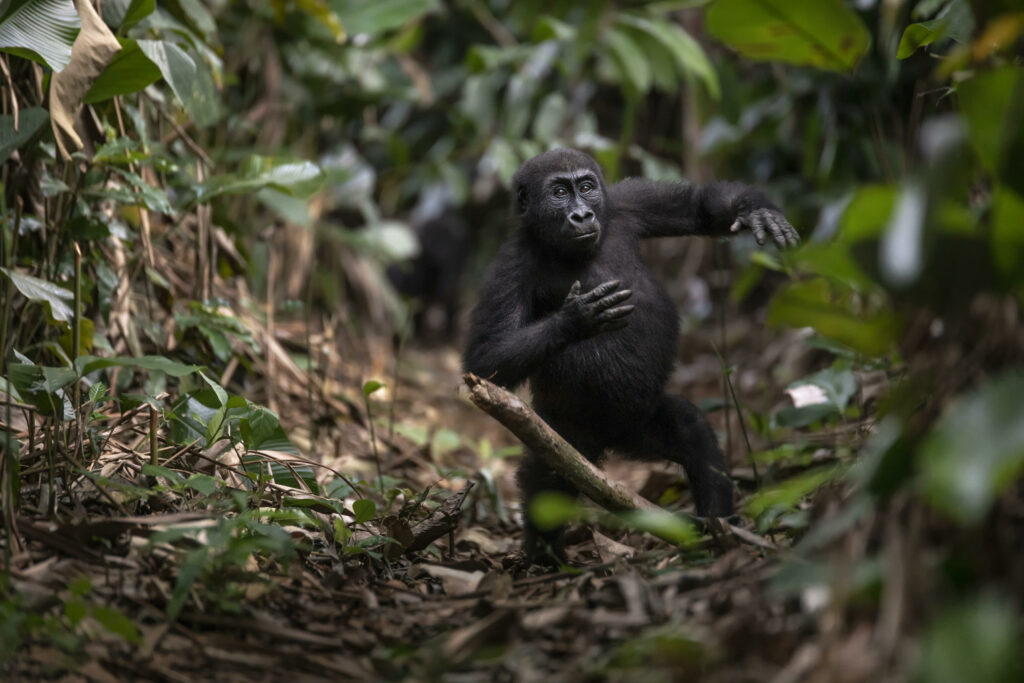
If you’re looking for a real jungle adventure and aren’t afraid to get a little wet and dirty—we’re talking trekking through baïs, dense jungle, wading waist deep in the Congo River, searching for forest elephants and western lowland gorillas and bongos—then a visit to the Republic of Congo’s Odzala-Kokoua National Park is the place for you. Odzala is one of the oldest parks in Africa, and one of our top travel destinations for adventure-seekers and wildlife photographers. This nirvana for wildlife lovers is situated in the heart of the second-largest tropical rainforest in the world: the Congo Basin. Managed by African Parks, Odzala is a biological hotspot of global importance harboring critically endangered western lowland gorillas, elusive forest elephants, and over 440 bird species. Joining a trip here and staying at the Odzala Discovery Camps positively impacts gorilla protection and rainforest conservation.
The beautiful six-roomed Lango Camp overlooks a baï, is renowned for attracting flocks of African grey parrots, and is a playground for forest elephants. Ngaga Camp, which rests in a glade above the primary forest, is both a research center and a six-bungalow camp is home to thousands of western lowland gorillas, as well as 15 other species of primates. Mboko Camp—the largest of the three camps in Odzala—has twelve rooms along the edge of the savannah on the banks of the Likeni River and hosts plenty of adventurous river activities, including kayaking and sunset boat cruises.
We say the best time to visit Ozdala is during the dry season between December-February and June-September. There is limited rainfall (which can make the air slightly hazy), but the humidity levels are low. It’s also the time of year when the fruits ripen, and gorillas often come and feed in the trees—the easiest time to observe and photograph them. The wildlife is also easier to observe in the baïs during this season as it’s when they get closer to the water streams.
Sound thrilling? Learn more about a visit to Odzala-Kokoua National Park and 10 reasons you’ll love going on a safari there on the blog—we promise its one of the best places to travel in 2023.
São Tomé and Principe

São Tomé and Príncipe—a tiny two-island nation— is the second-smallest country in Africa and is literally located at the center of the world. Created by volcanic activity millions of years ago, these striking islands rise out of the Gulf of Guinea, and the vibrant rainforests are among the most biodiverse on the planet. It’s amazingly safe and welcoming to visitors, especially those interested in eco-tourism.
In particular, Príncipe, a UNESCO Biosphere Reserve, is an unspoiled paradise that’s home to several endemic terrestrial and marine species. The people (just 7000 call it home!) are deeply Earth-connected, warm, and welcoming. The islands blend natural wonders with a gripping history. Today, visit the historic roças and vintage cacao plantations and experience the sustainable, thoughtful revitalization of the industry.
Once the world’s largest cacao producer, they were known as ‘the chocolate islands.’ You can walk along the cacao route, visit a cacao plantation, and see how it’s produced from farm to table. Explore stunning waterfalls in the lush, tropical forests of the Parque Natural do Príncipe. Find historic ruins, spend your afternoons at the fantastic beach, swim in enchanting bays, and visit the nesting sea turtles and snorkel with them. This untouched paradise is an absolute must-visit.
Salkantay Trek, Peru
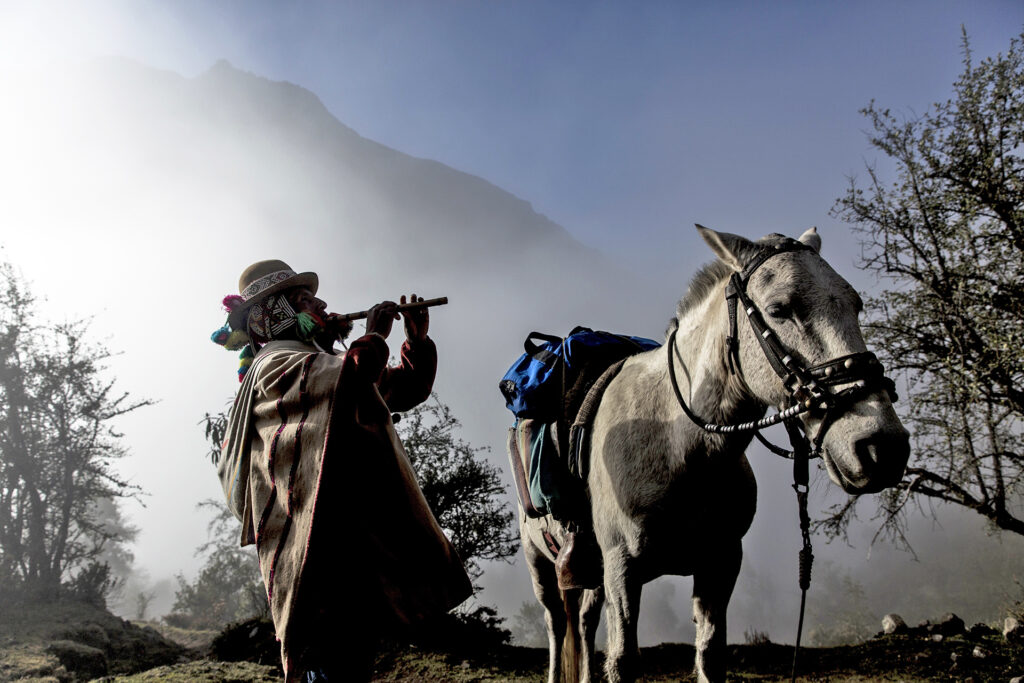
We always love taking the road a little less traveled, especially to some of the more popular destinations we sell. Of course, Machu Picchu isn’t anything new per se… but if you’re looking to veer away from the so-called ‘classic’ Inca Trail trek, this one’s for you. Skip the camping and permits involved with hiking the Inca Trail to Machu Picchu and opt for the seven-day Salkantay Trek to Aguas Calientes. You’ll end your long days of hiking with hot showers, massages, Jacuzzis, and gourmet meals paired with delicious wines.
The range of landscapes along the trail is remarkable—from high tundra, glacial moraines, and turquoise lakes to shady bamboo forests and steep descents through plentiful orchards, including hiking sections of restored Inca trails, and through villages where locals still maintain age-old traditions. The trek is a unique opportunity to immerse yourself in Andean culture and learn about the Inca civilization.
There are four lodges to visit along the Salkantay Trek: Salkantay Lodge, built on the flatlands of the Rio Blanco river valley, with a stunning, unobstructed view of the majestic Salkantay mountain peak. The very remote Wayra Lodge is a cozy mountain refuge with dramatic views of Mt. Humantay. Colpa Lodge, surrounded by emerald mountains in a cloud forest, is situated on a promontory at the confluence of three rivers (complete with a hot tub). And finally, Lucma Lodge (resembling a treehouse!) is situated in a lush avocado orchard at the edge of the Amazon jungle near the village of Lucmabamba.
The best time of year to hike the Salkantay Trail is during Cuzco’s dry season, which lasts from April to November (the wet season is from December to March). June to September are the busiest months.
Ladakh, India
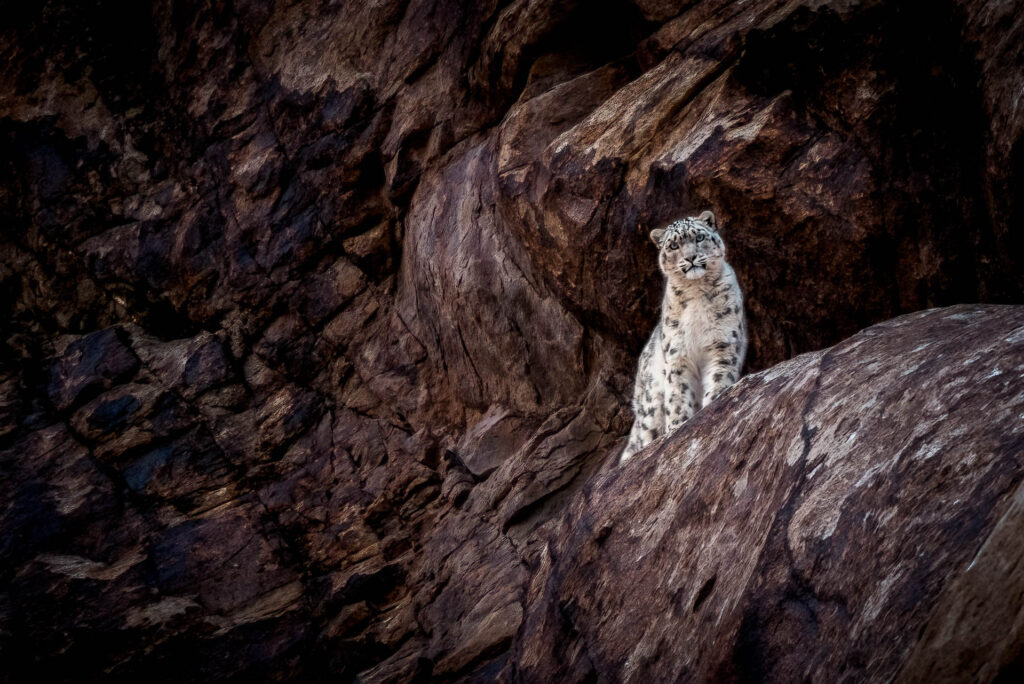
The allure of the ‘grey ghost’ in one of the most remote places on earth brings most travelers to the mountainous, trans-Himalayan region of Ladakh, India. With thick grey, white, and spotted black coats that give them a natural camouflage, the elusive big cats are almost impossible to see with an untrained eye. And while they have evolved to live in some of the harshest conditions—including India’s Hemis National Park—snow leopard numbers are scarce.
There’s so much more to a mystical winter journey along the Silk Road than the sighting of snow leopards, too. The entire experience of being in the Himalayas, surrounded by magnificent landscapes, remote mountain villages, and ancient kingdoms, is unparalleled. There are Buddhist monasteries offering intimate cultural encounters, unique Himalayan and Indian cuisine, and the opportunity to stay in an authentic, traditional homestay, Snow Leopard Lodge, or soon-to-open luxury camp LUNGMĀR. You’ll stand in awe of staggeringly beautiful scenery, and experience a quiet that’s hard to describe—offering the opportunity to disconnect. Plus of course, the unique wildlife viewing opportunities with knowledgeable guides and scouts make an expedition here one of the most extraordinary experiences we offer. It’s truly just you, a handful of other people, the wildlife, and the mountains. It’s pretty surreal when you’re looking at that landscape, especially when the snow has fallen on the mountains—it feels like you’re on a different planet.
The best time of year to visit Ladakh is during the hard Himalayan winter between December and March, aka snow leopard season. That’s when mountain goats come down into the valley for food, bringing the snow leopards on their trail. It gets down to 41°F to -14°F at night, but then you’re warm inside because it’s dark by 5 p.m. Daytime is pleasant from 28.4°F to 35.6°F (-2°C to 2°C).
Want to learn more about what it’s really like to go on a snow leopard safari? Check out this Q&A with India expert Amit Sankhala on the blog for an in-depth discussion on what it’s like to travel to Ladakh, India.
Mahale Mountain National Park, Tanzania
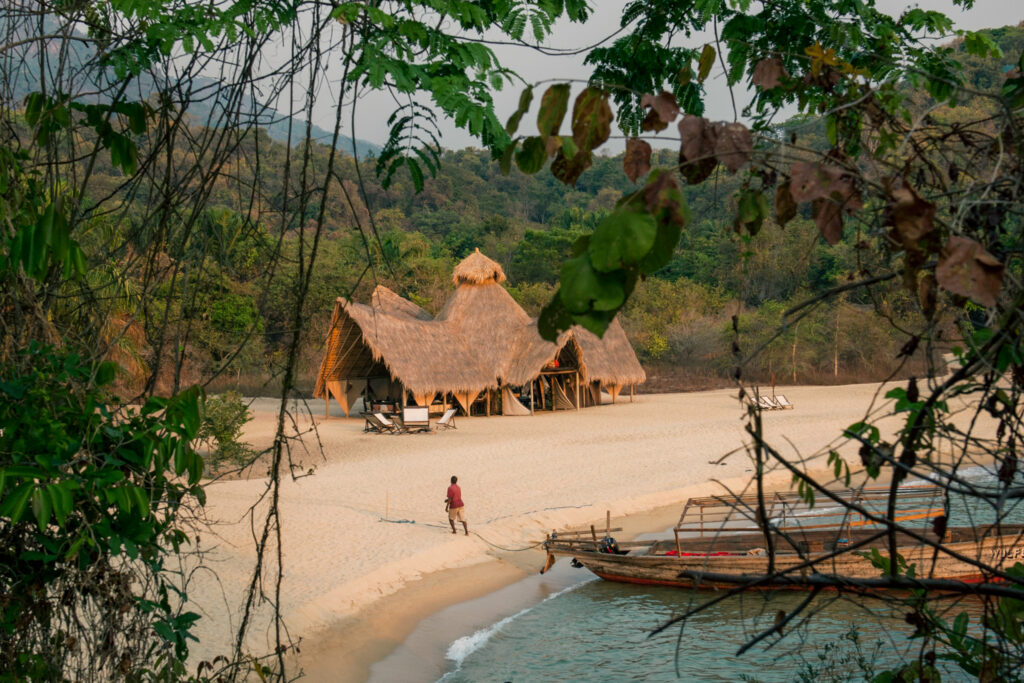
On the shores of cobalt-blue Lake Tanganyika rises a mystical jungle where waterfalls, lost lagoons, and palms dot rolling, bottle-green mountains. Venturing into the forest’s shadowy depths, the world’s largest remaining population of chimpanzees swing through the canopy. This is Mahale Mountains National Park: a remote paradise in southwest Tanzania that offers travelers a remarkable wild-living, chimp-tracking adventure. You can also find eight other species of primates, leopards, and other forest-dwelling creatures. The park is home to 82 species of mammals and 355 species of birds. Other activities available in the park include hiking through the forest, swimming in waterfalls and natural mountain pools, sailing on dhows or kayaking on the crystal clear lake, and visiting a local community or school.
After flying to the Mahale airstrip, visitors cross a threshold into the magical interior of southwest Tanzania, arriving at Greystoke Mahale lodge by dhow boat. Six thatched-roof bandas face the lake, where guests can reach the mercurial waves at sunset from bed. This secluded Tanzanian treasure is tricky to reach—but aren’t all the best places? Flights only run twice a week, so stay a while.
The best time of year to visit Mahale Mountains National Park is during the dry season from June to September. The hiking can be more strenuous in June to early July when the chimps are higher up the mountain. It scarcely ever rains in June, July and August, with aquatic dust-offs ending by the end of May and sprinkles starting around early October.
Read this blog about an amazing chimpanzee encounter in Mahale Mountains National Park for an in-depth, personal narrative on the experience.
We hope you’re as excited as we are about the best travel destinations 2023 and can’t wait to plan your next great adventure. Contact us to help you craft the perfect itinerary.
Plan your 2023 adventure with us!
Ready to start planning your own incredible adventure? We make the process stress-free and enjoyable.
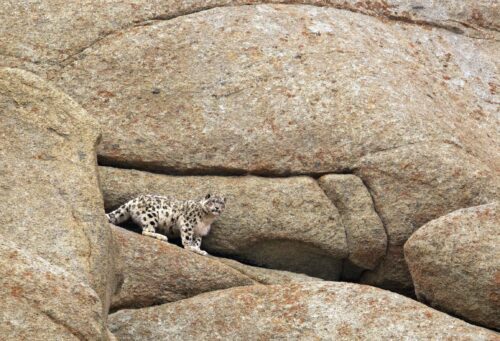
- Itinerary
Quest for Snow Leopard
Himalayan landscapes, wildlife, and people of Ladakh and the Husing Valley

- Itinerary
Peru: Lodge-to-Lodge Trek & Cultural Retreat
The Salkantay Trek takes you to Machu Picchu in style; cultural highlights await at Lake Titicaca

- Itinerary
Last Jungle: Exploring Congo’s Odzala
Lowland Gorilla Tracking, Remote Bais, and Outdoor Adventure
